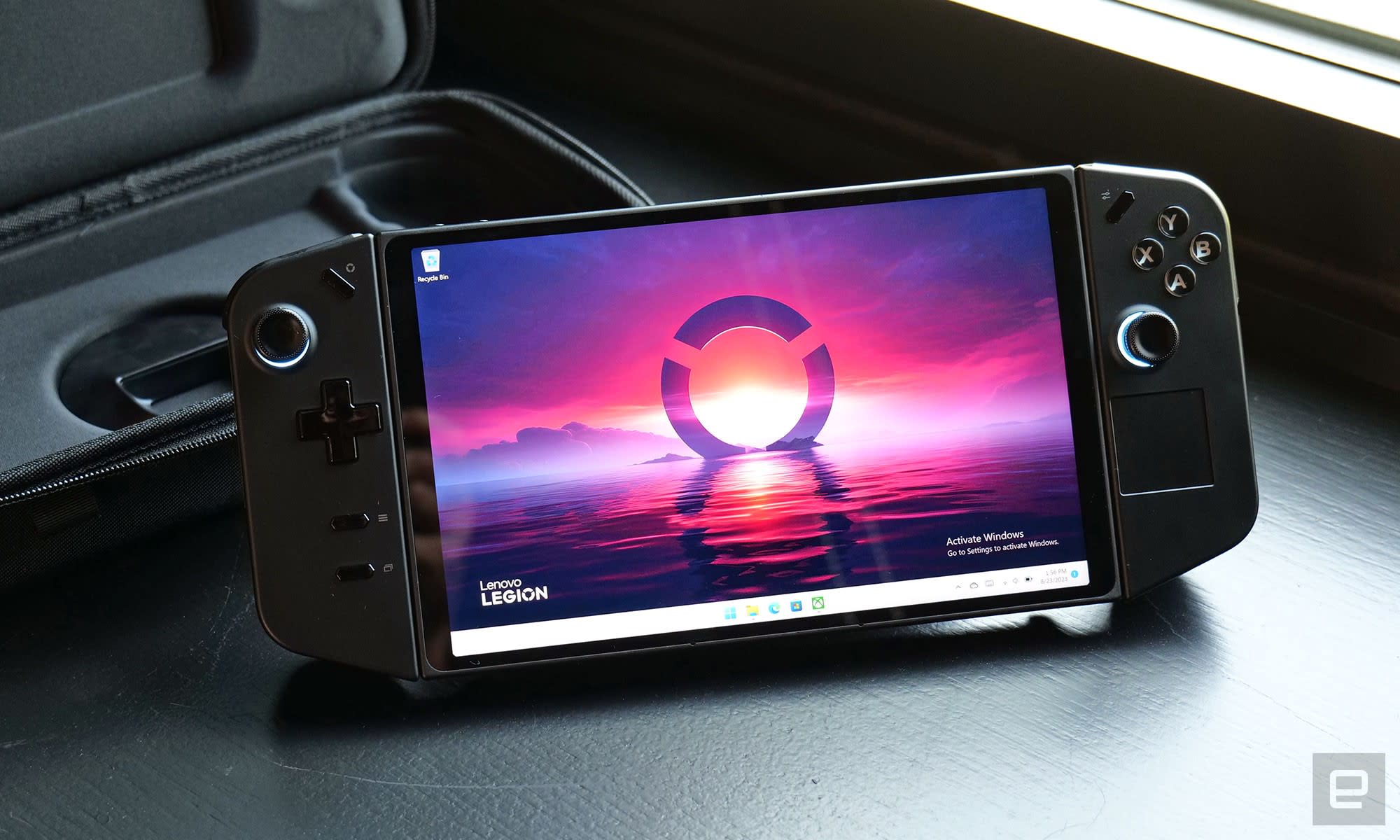Photo: Photo by Sam Rutherford/Engadget
‘Priced at $699, it boasts a larger display and detachable controllers, all while running on the latest Windows 11.’
Lenovo Enters Handheld Gaming PC Market with Legion Go
In a move that is sure to excite fans of handheld gaming PCs, Lenovo has announced its entry into the category with the Legion Go. The Legion Go aims to make a big difference in the market, with some unique twists that set it apart from its rivals.
While it’s important to note that the units available for testing are pre-production samples, there are already some standout features worth mentioning. One of the most notable is the Legion Go’s screen, which boasts an 8.8-inch 2,560 x 1,600 IPS panel with a 144Hz refresh rate and 500 nits of brightness. Not only is this panel as fast as the ASUS ROG Ally, but it also offers the largest screen in its category, with vibrant colors that make it even more appealing.
However, the Legion Go’s larger display does come with a downside – its size. Measuring 11.8 x 5.15 x 1.61 inches, the Legion Go is bulkier compared to sleeker rivals like the ROG Ally. Despite this, it still offers a familiar Xbox-style button layout on the front, along with an interesting asymmetrical rear paddle layout featuring a total of four rear buttons and a scroll wheel.
Lenovo has drawn inspiration from the Nintendo Switch, evident in the folding kickstand at the back and the ability to detach the Legion Go’s controllers from the main body. While removing the controllers may not be as smooth or easy as on a Switch, the kickstand allows users to prop up the display on a table while using the controllers remotely. Additionally, the Legion Go features two USB 4 ports, enabling users to connect peripherals like a mouse and keyboard or use the single touchpad on the right control to navigate in Windows.
One unique feature of the Legion Go is the FPS Switch located on the bottom of the right controller. By toggling this switch and placing the controller into an included cradle, users can transform it into a vertical mouse for playing shooters. However, it remains to be seen if this setup will be preferred over traditional horizontal mice or joysticks.
In terms of specifications, the Legion Go is equipped with an AMD Z1 Extreme chip, 16GB of RAM, up to 1TB of storage, and a 49.2 WHr battery, making it just as powerful as the ROG Ally. What sets the Legion Go apart is its aggressive pricing strategy, starting at $699, which includes an included case – a feature not offered by ASUS.
While Lenovo still has some final touches to make before the official launch in October, the entry of another major player into the handheld gaming PC market signals that the battle for supremacy is just beginning.
